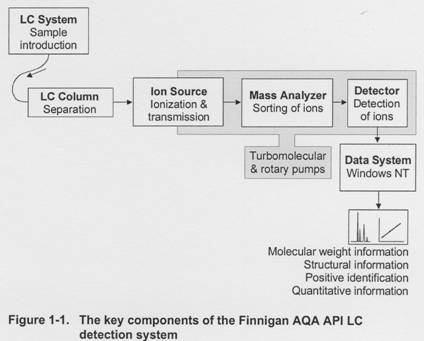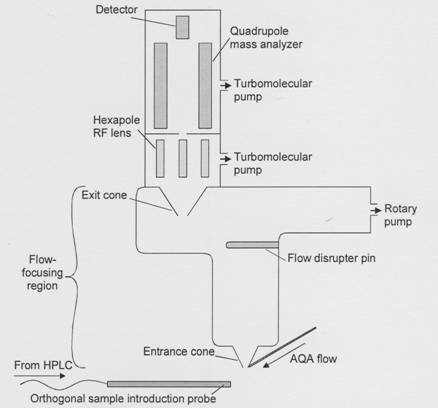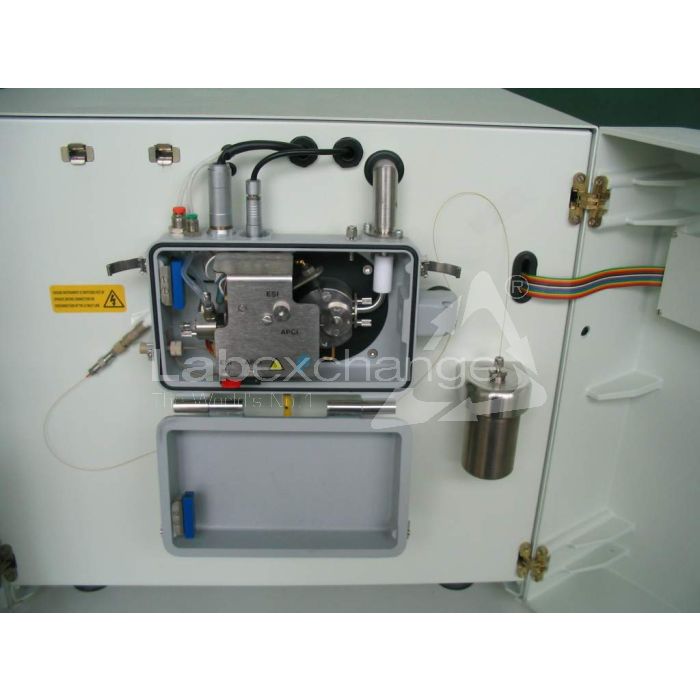Finnigan AQA
| Objektnummer | B00016990 |
|---|---|
| Seriennummer | 016990 |
| Object Naam | Finnigan AQA |
| Status | Stock unit |
Product groep: Massaspectrometers
Status, leverings- en betalingsvoorwaarden
Apparatuurcontrole
De gebruikte apparatuur wordt voorafgaand aan levering gecontroleerd door Labexchange Service GmbH. U ontvangt volledig functionerende apparatuur.
Verzending
De vermelde verzendtijden zijn telkens de kortste voor een artikel. In bepaalde gevallen kunnen de daadwerkelijke verzendtijden daarvan afwijken. De uiteindelijke verzendtijden worden aangegeven in de opdrachtbevestiging.
In de regel bieden we combinatieleveringen aan. Levertijden zijn afhankelijk van het artikel met de langste levertijd. Deelleveringen zijn mogelijk tegen een toeslag.
Verzendmethoden
Koeriersdiensten, transportbedrijven, zelf afhalen, levering door Labexchange wagenpark
Informatie levering
De prijzen zijn exclusief verzendkosten. De genoemde verzendkosten zijn de te verwachten kosten. Afwijkingen zijn mogelijk. In het geval geen kosten voor verzending zijn gespecificeerd, vraag die dan afzonderlijk aan.
De opgegeven vracht- en verpakkingskosten hebben betrekking op de goedkoopste transportroute en zijn onder voorbehoud van onvoorziene kostenstijgingen. Door onvoorziene gebeurtenissen kunnen vrachttarieven en levertijden op elk moment veranderen en moeten ze worden aangepast aan de huidige situatie. Incoterm coderingen volgens Incoterms 2010: Bij afhalen EXW, CFR voor zendingen over zee, CPT per luchtfracht, andere zendingen DAP. Opmerking: We geven geen preferentieel certificaat/EUR1 af. Bij zelf afhalen/af fabriek (EXW) uit derde landen en de EU wordt 16% btw als borg ingehouden, tot we de ontvangstbevestiging/het leveringscertificaat van de koper hebben ontvangen.
Betalingsvoorwaarden
Wij accepteren geen betalingen Letter of Credit, PayPal etc. Het factuurbedrag is volledig verschuldigd. Er zijn geen betalingskortingen. De goederen blijven tot volledige betaling ons eigendom.
|
Land |
Mogelijke betaalmethoden |
Opmerking |
|
Duitsland, Oostenrijk, Zwitserland |
Betaling via factuur, vooruitbetaling, per creditkaart |
Betaling via factuur is mogelijk voor ondernemingsklanten. |
|
Nederland, België en Luxemburg |
Betaling via factuur, vooruitbetaling, per creditkaart |
Betaling via factuur is mogelijk voor ondernemingsklanten. |
|
Andere landen |
vooruitbetaling, per creditkaart |
|
Onze Algemene Voorwaarden voor Verkoop, Levering en Betaling zijn hierop van toepassing. Deze voorwaarden zijn hier te downloaden.
Tussenverkoop is ons voorbehouden.
Beschrijving status:
Alle artikelen zijn gebruikte artikelen, tenzij bij een artikel uitdrukkelijk wordt vermeld dat het om een nieuw apparaat gaat.
manufacturer: Finnigan
model: AQA
annotation: Dokumente engl.
The following illustrations and descriptions refer to the instrument model and are drawn from brochures. They do not represent the scope of delivery. Please refer to the text of the offer for the exact scope of delivery.
The Finnigan AQA TM MS detector has been specifically designed and engineered for liquid chromatographic detection using Atmospheric Pressure Ionization (API) and Mass Spectrometry (MS) technology. These technologies can provide sensitive and selective detection of organic molecules.
Interfacing High Performance Liquid Chromatography (HPLC er LC) and MS provides the separation scientist with one of the most powerful analytical tools available. Both LC and MS have developed to a point whereby they represent two of the most important techniques in characterizing and detecting organic compounds. Although the potential benefits of interfacing LC to MS have been clearly recognized for mang years, producing a truly automated `connect and use" Interface has proven to be a challenging task.
Atmospheric Pressure Ionization (API) techniques now provide highly sensitive detection using conventional to capillary LC flow rates on benchtop MS detector systems. LC/MS works with typical solvent compositions, whether the separation is achieved by isocratic or by gradient elution.
Historically, LC/MS has been compatible only with volatile buffer systems using modifiers such as trifluoroacetic acid, formic acid and acetic acid. Phosphate buffers, although extensively used in LC Separations, were not suited to LC/MS due to rapid blocking of the ion sampling region caused by the deposition of involatile phosphate salis. The self-cleaning AQA API source allows for extended periods of Operation in LC/MS with chromatographic buffers such as phosphates er ion pairing agents and Samples in dirty matrices.
API using Electrospray (ESI) or Atmospheric Pressure Chemical Ionization (APCI) Interfaces has proved to be invaluable in meeting sensitivity requirements in quantitative methods. lt can also provide structural Information, which is complementary to techniques such as NMR and infra red spectroscopy.
This introduction focuses on the principal components of the System.
System Overview
The Finnigan AQA MS detector is an integral part of the LC detection system. Key points of the system are:
The sample is introduced into the ion source using an LC system, possibly through a column.
In an API MS detector, the part of the source where ionization takes place is held at atmospheric pressure, giving rise to the term Atmospheric Pressure Ionization (API).
In ESI, the sample is ionized in the liquid phase, whilst in APCI, ionization occurs in the gas phase. In both Gases, efficient desolvation is needed to remove the solvents from the sample.
Ions, now in the gas phase, are passed through the mass analyzer and are collected at the detector.
The detected Signal is sent to the data system and stored ready for processing.

The main features of the Finnigan AQA MS detector are:
Dual ESPAPCI orthogonal probe
Self-cleaning API-LC/MS Interface
Flow-focused source, eliminating the need for electrostatic focusing

Schematic diagram of the Finnigan AQA API inlet, analyzer and detector system.
The LC eluent is ionized at the API probe wich the resulting ions flowfocused into a hexapole RF lens. The quadrupole mass analyzer filters the ions before detection.







